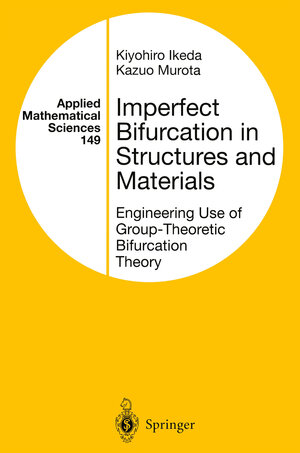
From the reviews:
MATHEMATICAL REVIEWS
„The book is an excellent source of practical applications for mathematicians working in this field. It fulfills its goal of helping close the gap between mathematical and engineering practice in bifurcation analysis, especially of geomaterials such as sand and soil. A short set of exercises at the end of each chapter makes the book more useful as a text. The book is well organized and quite readable for non-specialists.“
„The present book gives a wide and deep description of imperfect bifurcation behaviour in engineering problems. … the book offers a number of systematic methods based on contemporary mathematics. … On balance, the reviewed book is very useful as it develops a modern static imperfect bifurcation theory and fills the gap between mathematical theory and engineering practice.“ (Boris V. Loginov, Zentralblatt MATH, Vol. 1005, 2003)
„The book is unique in considering the experimental identification of material-dependent bifurcations in structures such as sand, Kaolin (clay), soil and concrete shells. … These are studied statistically. … The book is an excellent source of practical applications for mathematicians working in this field. … A short set of exercises at the end of each chapter makes the book more useful as a text. The book is well organized and quite readable for non-specialists.“ (Henry W. Haslach, Jr., Mathematical Reviews, Issue 2003 f)
„The current book is a graduate-level text that presents an overview of imperfections and the prediction of the initial post-buckling response of a system. … Imperfect Bifurcation in Structures and Materials provides an extensive range of material on the role of imperfections in stability theory. It would be suitable for a graduate-level course on the subject or as a reference to research workers in the field.“ (J Petrolito, Applied Mechanics Reviews, Vol. 56 (3), 2003)
„This book is a comprehensivetreatment of the static bifurcation problems found in (mainly civil/structural) engineering applications. … The text is well written and regularly interspersed with illustrative examples. The mathematical formalism is kept to a minimum and the 194 figures break up the text and make this a highly readable and informative book. … In summary a comprehensive treatment of the subject which is very well put together and of interest to all researchers working in this area: recommended.“ (David Wagg, UK Nonlinear News, November, 2002)





